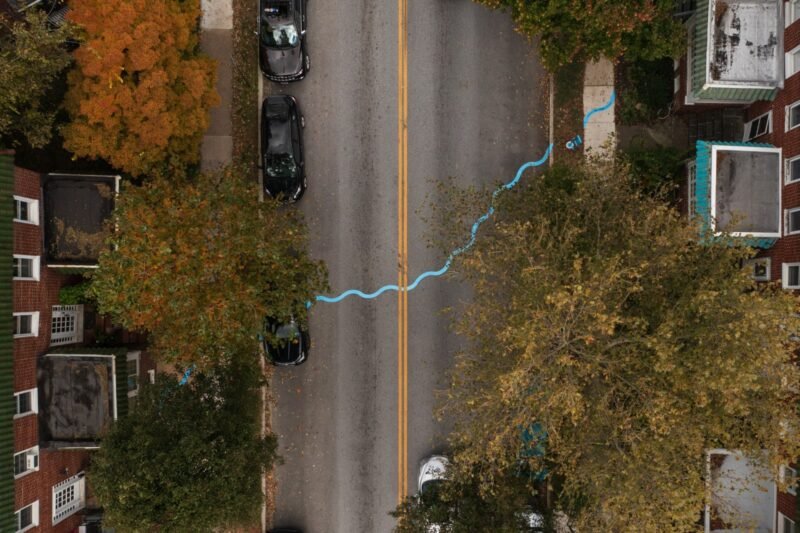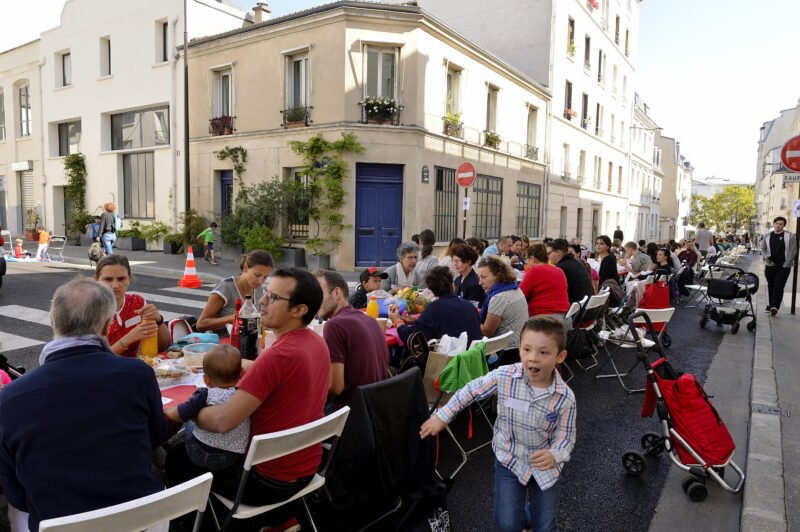Flying Grass Carpet — A Landscaping Fairytale
Flying Grass Carpet is a huge carpet entirely made of artificial grass. It flies over the world as a temporary landscape, to land in all kinds of places where an extension of the landscape is needed. I visited the Flying Grass Carpet in Amsterdam, and talked about it with some people hanging around. The initial astonishment of most visitors was surprising: “Flying carpet? But… how does it fly?” That of course is the secret of this new instant landscape.
The Flying Grass Carpet’s size can be altered from 18 by 22 meters to 32 by 58 meters. The design consists of different parts that can be adjusted to any location. The grand première took place in Amsterdam, as an extension of the Westerpark, a city park located in the west part of the centre of Amsterdam. The Flying Grass Carpet is part of the Kunstvlaai festival (an alternative art fair). It merges perfectly into the existing modern park landscape as an extra piece of park that blows your mind. Some people dare to use it, others pass by it carefully. On the one hand it’s a beautiful piece of well-made landscape, on the other hand it’s an artificial piece of nature. After two hot festival days the rest of the park is already a little parched. The natural grass seems to be tired of all those people and the hot sun. The Flying Grass Carpet is now turning more and more into the social centre of Westerpark. It’s still looking green and juicy and people are picnicking, sitting in small groups drinking, smoking and laughing. A Persian oasis in a modernistic Dutch park! The Flying Grass Carpet is designed like a gigantic Persian rug with different patterns executed in different types and colours of artifi cial grass, giving it a typical look and feeling. For 10 days it stays in Amsterdam. Then it flies to Aachen, Rotterdam and other cities all over the world to be a part of exhibitions, landscapes and festivals.

Creating an artifi cial pop-up landscape is an idea and design of Bart Cardinaal and Nadine Roos of HUNK-design, a Rotterdam-based agency working in the fields of architecture, design and interior, and allround artist Eddy Kaijser a.k.a. IDEddy. According to Bart Cardinaal and Nadine Roos, the Flying Grass Carpet is “a unique, temporary and fun park that can be placed anywhere. The carpet will bring people together while bringing them a piece of instant green into their city life. It offers opportunities to relax, to play, to picnic and for all sorts of events. Like in the fairytale the Flying Grass Carpet travels from one city to another and connects different cities and their citizens with each other. A worldwide shared public domain is created. Since city centres all over the world are rapidly being privatised, the public domain is under pressure and is losing its quality. The Flying Grass Carpet delivers a beautiful alternative for city dwellers to enjoy the city. It brings instant cosiness and a green, leisurely feeling to any city it lands in. The combination of green, beauty, and activity makes the Flying Grass Carpet irresistible!”
Flying Grass Carpet is definitely part of a movement of new urban exploration that I would call the Pop-up City. Groups of architects, designers and planners around the world are searching for the answer to this question: how to plan a city in a world that changes more rapidly than ever before? After the development of Archigram’s imaginary concepts in the early seventies like the Walking City, the Instant City and the Plug-in City, the societal context as well as the technical possibilities nowadays seem to be ripe for these kinds of spatial practises that are not bounded by place and time.

More than ever societies are strongly linked to global developments that have a substantial infl uence on the local scale. Changes take place continuously with more and more speed. Present day cities deal with many problems which are mostly related to rapidly increasing international societal, cultural, technologic and economic transformation processes. More variability in economic, political and cultural patterns leads to new expectations and renewals of dynamic capacities of the city.
The new generation of pop-up city makers continuously poses the question of whether current city practises are still up to date during the rapidly changing processes today’s cities have to deal with. Does every building still have to be built for perpetuity? And why doesn’t it make more sense to explore opportunities for more rising and disappearing, loose, temporary and fl exible manners of spatial planning and architecture? The Flying Grass Carpet seems to be one of the answers to this increasing need of higher fl exibility in urban environments in landscaping.

Of course, the Flying Grass Carpet doesn’t really fly itself, to answer the secret question. But it’s transportable by plane, cargo train or truck, and that’s already quite amazing for a landscape. Everybody is invited to hop on board of the Flying Grass Carpet and enjoy its quest for adventure and urban leisure. It brings with it a unique experience of fun and relaxation that can be shared worldwide. Once landed in a city, the Flying Grass Carpet is ideal for all kinds of events. Just like ordinary parks, people can lie on the grass or play a ball game with their friends. But its attractive appearance is also perfect for special events. It’s an excellent spot to have a frisbee tournament, a city picnic and all sorts of contests and performances. In case you would like to order the Flying Grass Carpet for your city, please contact info@flyinggrasscarpet.org.
This article was published in Monu Magazine on Urbanism.



